Submersible Pump Wiring Diagram:
This diagram shows how to make a submersible pump wiring diagram. In this circuit, we use an ammeter, a voltmeter, an SP MCB ( Single Pole Miniature Circuit Breaker ), a push switch, a starting motor capacitor, a running motor capacitor, and a submersible pump. This circuit diagram is very easy to connect and it’s a simple diagram. If you want to know more about this circuit diagram and want to see the animation connection video of this circuit please check our youtube video below the post.
Advertisements
Components needed For this Project:
You can get the components from any of the sites below:
- SP MCB 10A [See Buy Click Amazon]
- Single Phase Amperemeter [See Buy Click Amazon]
- single phase Volt Meter [See Buy Click Amazon]
- Push Button NO Switch [See Buy Click Amazon]
- Terminal Block [See Buy Click Amazon]
- 50 MFD Capacitor (220V ac Line) [See Buy Click Amazon]
- single phase Submersible water pump (1 HP) [See Buy Click Amazon]
*Please note: These are affiliate links. I may make a commission if you buy the components through these links. I would appreciate your support in this way!
Advertisements
Components used to make the Submersible Pump Wiring:
01. SP MCB:
In single-pole MCB, Switching and protection are Affected in only one Phase. Single phase supply to break the phase only. A single Pole breaker is Typically used with 120-volt Circuits, and a 6-20 amps Miniature Circuit Breaker. They are constructed with one Line Wire and one Neutral wire. A Single Pole switch is the most basic General-Purpose switch that you use to Control a light or another device from one location. These Switches have 2 Brass-Colored screw Terminals Connected to the hot Power source wires. Pole refers to the number of Circuits Controlled by the Switch SP Switches Control only one Switch Electrical Circuit.
Ammeter, an instrument, with the help of which the flow of electricity can be measured directly in Electrical units, amperes. It is a galvanometer with very low resistance. As a result, the entire current flows through the meter coil. Current is measured with an ammeter. So it can be said that the device that measures the flow of current in an ampere unit is an ammeter. Electric current is the flow of electrons whose unit is an ammeter. So it can be said that the device that measures the flow of current in an ampere unit is an ammeter. An ideal ammeter has no internal resistance. But in reality. the ammeter has little internal resistance. The range of the ammeter depends on this resistance.
03.Volt Meter:
An instrument that measures the potential difference between any two points in a circuit directly in volts is called a voltmeter. A voltmeter is an Electrical instrument that directly measures the potential difference between any 2 points in a circuit in volts. The voltmeter is connected in parallel with the 2 points in the circuit where the potential difference is to be measured. This instrument consists of a galvanometer. Like an electric cell or an ammeter, a voltmeter has 2 terminals, a positive and a negative terminal. Usually, the positive end is red and the negative end is black.
NO (Normally Open) Terms Refer to a Type of Dry Contact or Wet Contact. A Push to Make Switch Allows Electricity to flow Between its 2 contacts when held in. When the button is released, the Circuit is broken. This type of Switch is also known as A Normally Open (NO) Switching system. As its name implies, a Normally Open (NO) Switch Contact or “a Contact” is a Switch. Put very simply, a Normally Open Sensor will have no Current When in a Normal State But When it Enters an Alarm State it will have +5V applied to the Circuit.
05. Wire Connector:
Terminal Clocks are Connectors That Terminate a Single wire and Connect it to a circuit or other system. Terminal Blocks come in a range of shapes, Sizes, and ratings, but Always Terminate a single Wire and are Never multi-pole. Terminal Blocks are used to Secure or Terminate Wires and, in Their Simplest form, Consist of Several Individual Terminals Arranged in a long strip system. Terminals are Useful for Connecting the Wiring to the GND or, in the Case of Electrical power, for Connecting Electrical Switches and Outlets to the Mains side.
Motor Starting Capacitors are used during the Motor Startup Phase and are Disconnected From the Circuit once the Rotor Reaches a Predetermined Speed, Which is Usually about 75% of the Maximum Speed for that Motor type. These Capacitor Usually Have Capacitance Values Of Over 70 UF. The Starting capacitor creates a Current-to-Voltage lag in the Separate start Windings of the Motor. Starting Capacitor are Wired into The Auxiliary Winding Circuit of the Motor and are Disconnected from the main winding circuit by the Centrifugal Switch once the Motor has Reached a Predetermined Speed.
07. Running Capacitor:
A Running Capacitor is Designed to Continuously regulate the Current or phase shift to the Windings of a Motor or Engine with the aim of Optimizing its Energetic Efficiency and Overall Performance. The Purpose of a Running capacitor is to Accumulate an Energetic Charge from its source store it and release it Whenever it is required by the circuit. Running Capacitor create a charge, or Current to voltage lag, in the Detached start Windings of a motor or Engine. In this way, Running Capacitors can Ensure that a system is Continuously Provided with Sufficient Power to Operate optimally.
A Submersible Pump Is an Air-Tight Sealed Motor Close-Coupled to The pump is body. The Main Advantage of This Type of Pump is That it Prevents Pump Cavitation, a Problem Associated With a High Elevation Difference Between the submersible Pump and the Fluid Surface. Submersible Pumps As The Name Suggests Are made To Be fully Submerged in Water. It is a Centrifugal Water Pump, Meaning It Has a Motor That Powers An impeller Designed to Rotate And Push Water Outwards. The Motor is located Within a Waterproof Seal and is Closely Coupled to The body of The Pump That it Powers.
Thank You for visiting the website. Keep visiting for more Updates.
Frequently asked questions
Submersible motor wire is typically used to supply electricity to wells, sump motors, and large-scale pumping systems in residential, farming, or industrial applications. Flat Submersible Pump Wire. Twisted Submersible Pump Wire.
This week we will be talking about the difference between two and three-wire submersible well pumps. Firstly, both types feature a ground wire which should not be counted. Two wire pumps will have 2 black wires or a green wire. Three wire pumps have a black, red, yellow, and green wires.
Polypropylene insulation is generally used for water-tight insulated magnet wire for submersible pumps. A nylon sheath is used for mechanical protection over the polypropylene insulation layer. Hitachi uses specially developed Denatur polypropylene that offers very stable waterproof characteristics.
In North America, the small ones (1/3-hp, 1/2-hp, 3/4-hp) are usually 120V AC. Larger 1 are 240-volts AC. Much larger 1 (over 5 to 10 hp) are 3-phase (240, 277, 460, etc). Most everywhere else, all pumps (like all electric motors) are 240V AC until they get over about 10 kW and then they'll be three-phase.
There are many types of submersibles, including both human-occupied vehicles (HOVs) or uncrewed craft, variously known as remotely operated vehicles (ROVs)andr unmanned underwater vehicles (UUVs).
Read more Single Phase Wiring
What is a kilowatt-hour (kWh) | kwh formula | What does kwh mean
Introduction to Electrical Units and CircuitskW and kWh on your electricity bill As your home uses electricity during...
What is the Difference Between kVA | What does KVA mean | kVA formula
Difference Between KVA ExplainedWhat does KVA Mean? There are technical terms aplenty when it comes to generators, and...
Power Factor | Power Unit | Energy | Electricity Unit
Power factor definition | Calculating Power FactorPower Factor Values In a purely resistive circuit, the power factor...

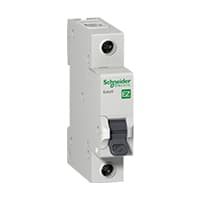


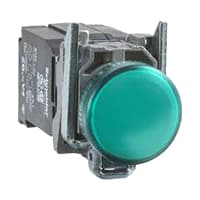
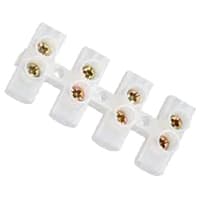

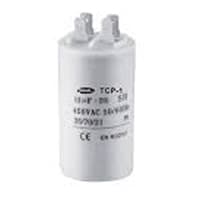
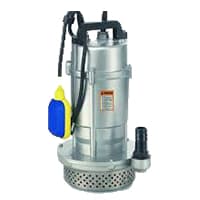
0 Comments